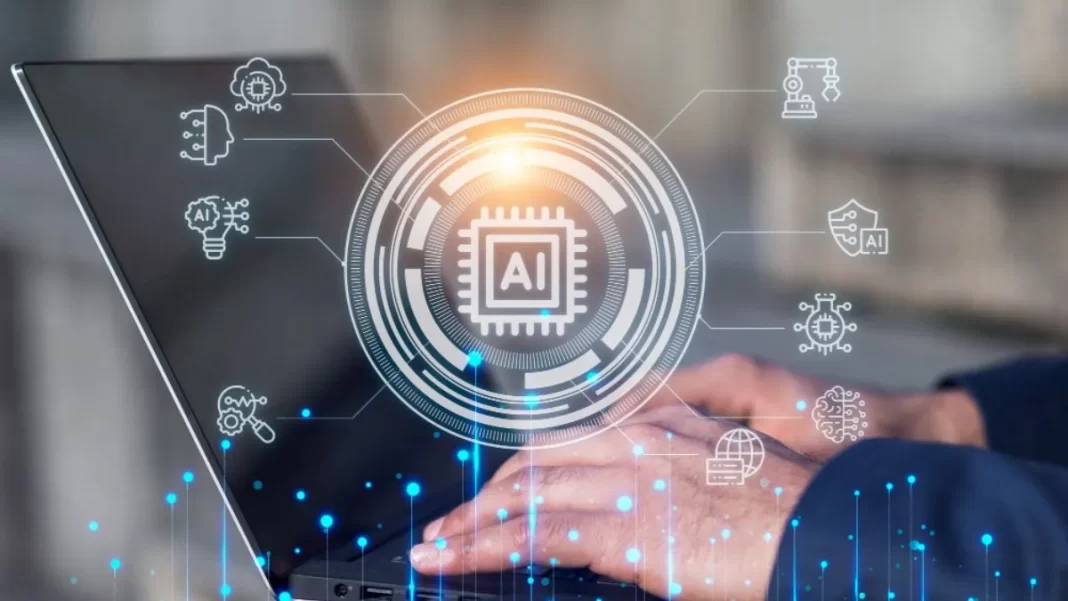The meteoric emergence of systems like ChatGPT made generative AI impossible to ignore across industries. Conversational abilities captivate imaginations everywhere. But professionally, software developers moved quickest embracing the technology’s practical near-term potential to boost their productivity. Now attention turns towards formulating wider business use cases of Generative AI beyond the profound coding impacts already underway.
Generative AI adoption progressed extremely rapidly within programming teams over the last year. Developers utilize capabilities like natural language processing to automate complex coding components, speed up workflows, and reduce repetitive tasks.
But while builders race ahead deriving value, the rest of the organizations move cautiously. Experimentation occurs around customer applications, but practical business uses remain largely aspirational for now. Risks exist when attempting to apply unpredictable new tech too hastily. Still, AI’s enterprise promise undoubtedly beckons those laying careful groundwork today.
Generative AI’s Software Development Superpowers
Programming constituted the first arena where generative AI demonstrated unambiguous utility. A survey by O’Reilly found that lot of tech professionals now use AI coding assistants, while most of them actively experiment with integrating the technology. The tools prove profoundly impactful:
Find out more in our latest report on generative AI: https://t.co/WCe2whQYPL pic.twitter.com/ZLfXDNEFct
— O'Reilly Media (@OReillyMedia) November 22, 2023
Accelerated Workflows
By describing desired functionality in plain language, developers skip tedious syntax and boilerplate. AI handles translation into intricate code.
Automated Mundane Tasks
Developers offload boring details like configuring prompts to AI tools for optimized results. More energy focuses on creative problem-solving.
Indexed Snippets Library
Central repositories collect and tag code snippets for easy discovery and reuse by AI algorithms. This fosters modular programming and collaboration.
Elevates Abstraction Efficiency
Generative AI allows builders to operate at higher levels of abstraction. Humans handle architecture and product requirements while assistants address implementation.
Tools have advanced rapidly already. Second-generation frameworks now simplify prompt design and infrastructure setup. Eager early adoption only expands as capabilities improve.
Also Read: Adobe Express Levels Up with Firefly: A Look at the Generative AI Features
Why Generative AI Aids Developers So Well
Several intrinsic technical and cultural realities make software development prime fertile ground for generative AI’s fast impact:
Programming Incentivizes Automation
At its core, coding is automated. Seeking efficiency motivates builders to utilize every technology multiplying output. AI logically continued long-established trends.
Background Adoption Feasible
Freely available cloud-based AI programming assistants allow bottom-up experimentation minus formal approval. As long as output improves, management often ignores the methods.
Ecosystem Energy Abounds
Developers actively share techniques and construct supportive tooling as publicly visible efforts. Achievements spread quickly across collaborator networks hungry for leverage.
Existing Analytical Prowess
Programming already requires rigor decomposing problems, describing logic, and scrutinizing output quality procedurally – aligning tightly with AI strengths.
Generative AI usage flourishes among developers partially due to uniquely fertile dynamics rather than solely capability merits. But cultural hunger couples with technical excellence to drive stunning productivity gains nonetheless.
Also Read:OpenAI Introduces GPT-4 Turbo, Paving the Way for Advanced AI
Developer Generative AI Adoption Trajectory Looks Strong
Reviewing evidence of programming productivity benefits and grassroots enthusiasm, developer adoption of generative AI seems destined for continued growth regardless of institutional mandates.
Surging job postings seeking AI and machine learning skillsets signal how critical these capabilities appear for future software roles. Programming leverages what delivers results – and AI squarely earns its place rapidly based on measured impact.
Some estimate over 50% of professional code soon involve AI assistance. Though estimates vary on pace, the direction looks unambiguous as assistants handle growing fractions of implementation intricacy behind the scenes.
Also Read: 8 Best AI Song Cover Generators to Create Covers
Emerging Business Use Cases of Generative AI Carry Risks
Beyond programming, applications directly assisting customers emerge as the next most active domain for generative AI experimentation. However, substantial pitfalls plague early efforts lacking rigorous oversight.
Careless Issues Damage Brands
Chatbots and similar customer-facing AI unavoidably reflect back on sponsoring companies. Glitches frustrate users, eroding trust and requiring expensive recovery efforts.
Appropriate Applications Remain Elusive
Business use case identification proceeds slowly outside select functions like IT. Determining where generative AI adds value without introducing instability or bias proves challenging.
Processes Co-Evolve Alongside AI
Successful adoptions transform how organizations operate with technology integrated. Merely automating existing workflows produces lacklustre results. More fundamental process realignments match capabilities.
In non-development realms, businesses stay rightfully cautious in vetting generative AI integrations despite boundless potential still needing actualization. Use case identification remains very much a work in progress for most.
Also Read: The Top 10 AI Art Generators to Explore Your Creativity
Realizing the Full Potential of AI
While programmers uncover immediate software development wins, realizing the full business promise of generative AI waits years down the road still for most companies, a reality consistent with past technological shifts. Maturing algorithms, mindsets and data build upon fragile but promising green shoots just sprouting today.
Infrastructure Accessibility Accelerates Iterations
Cloud services democratize underlying model access letting enterprises focus on customization. But data and skill constraints slow progress.
Data Imbalances Distort Outcomes
Unchecked biases latent in the uncontrolled internet-scraped training data underpinning models propagate risks. Clean data and rigorous testing prevents prejudice.
Transformation Follows Understanding
Succeeding with emergent technologies requires absorbing capacities systematically then reimagining interactions. Organizations still early in their comprehension journey proceed gradually identifying where generative AI soon reshapes operations.
Also Read: Top 10 AI Random Face Generators to Create Realistic Faces
Conclusion
Powerful generative AI foundations produce early developer enthusiasm by resolving tedious coding details rapidly. Yet beyond programming, business use matures slowly as cautious experimentation balancing tremendous promise and performance perils navigates uncharted waters.
This story repeats familiar patterns of trailblazing technologies followed by maturing over years through eras of early fumbling followed by later expertise. But guided prudently amid risks, these tools reshaping industries spark immense opportunity for those recognizing revolutionary potential patiently, strategically building foundations today to harness AI capabilities benefiting their business tomorrow.

